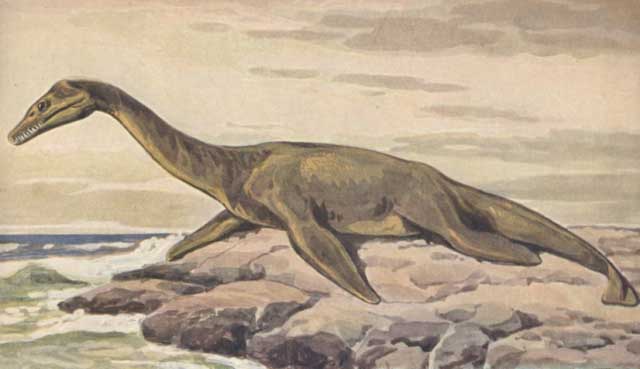Nessie and Saint Columba
Posted by: Nick Redfern on August 13th, 2012

Glasgow Boy has yet another new, and very good, post at his Loch Ness Mystery blog; this one on the infamous 6th Century saga of Saint Columba.
GB begins:
“Anyone with an interest in the Loch Ness Monster will tell you that the earliest account of the monster was by Saint Columba sometime in the 6th century AD. The story itself has been repeated countless times in books, magazine and newspaper articles since the early days of Nessie fever in 1933. Even the latest Nessie story can’t help but stretch back nearly 14 centuries to make a mention of it. But today I want to bring that bit of Nessie history a bit closer to its ancient times and instill in you the almost timeless mystery that is the Loch Ness Monster. It is in fact the earliest copy of Adamnan’s account of the life of Saint Columba.”
And here’s the full article, complete with images from that same early text.
About Nick Redfern
Punk music fan, Tennents Super and Carlsberg Special Brew beer fan, horror film fan, chocolate fan, like to wear black clothes, like to stay up late. Work as a writer.










St. Columba’s beast appears to be much more violent than modern accounts of the Loch Ness Monster. It had just killed a man, and it pursued a swimmer.
I have to wonder if the name “Ness” itself may be related to words like “neck” and “nixie”, meaning water spirits; or even if not, if the similarity of sound may have suggested a story.
Ah, but the other St. Columba account has the saint blessing the beast so long as it harms no one else in the future!
One theory on the origin of the word “Ness” I found:
There is a folk tale which even in the capacity of a myth gives a strong case for the Gaelic meaning of Ness. This story is recounted by J. F. Campbell in Popular Tales of the West Highlands on page 146, told to him sometime before 1860 by a Mr. Thomas MacDonald, gamekeeper at Dunrobin.
“Where Loch Ness now is, there was long ago a fine glen. A woman went one day to the well to fetch water, and she found the spring flowing so fast that she got frightened, and left her pitcher and ran for her life; she never stopped till she got to the top of a high hill; and when she was there, she turned about and saw the glen filled with water. Not a house or field was to be seen! “Aha!” said she, “Tha Loch ann a nis.” (Ha Loch an a neesh). There is a lake in it now; and so the lake was called Loch Ness (neesh).”1
J. F. Campbell also comments on the previous page of this book that the name might mean “The weasel lake”, “The lake of the falls” or “The lake of the island”.
The “‘Then it is a lake now!” story is clearly what is called folk etymology, since the story has nothing to do with the geological origins of the lake. The other options are more likely, though as with many old names, we may never be quite sure what the name means or how it was attached to this feature.
So, my suggestion of a connection to “nixie” and “neck” seems also to be folk etymology. The thing is, I’m surely not the first to make that connection, and it might not have suggested the presence of something like a Kelpie, which may in turn have contributed to the St. Columba story.
The original latin account gives the word “Nesa” which some also take to refer to Nassania, a river goddess known from the celtic regions of France. But the picts were not celts? Perhaps the Picts had their own name for Loch Ness?
Fyi, the sighting/story of St. Columba took pace in the River Ness, not in the Loch itself. That’s a significant point, even if the story is true.
@corrick
Yeah, that’s mentioned in the linked article, along with the fact that a few modern sightings have been in the River Ness, too.
@silverity
Interesting. Of course, there’s a strong possibility that the recorded version of the story suffered from something like “the telephone game”. All it would take would be one link in that chain, not necessarily the first or the last, making the right association….
What exactly were these modern sightings that took place in the River Ness? I’ve not come across such sightings.
There a few river sightings but not many.
“In February 1932 Miss Kathleen MacDonald of Inverness observed an animal swimming up-river towards the Holm Mills weir. She reported an animal six to eight feet in total length, with a very short neck and long toothed jaws, generally crocodile-like in appearance.”